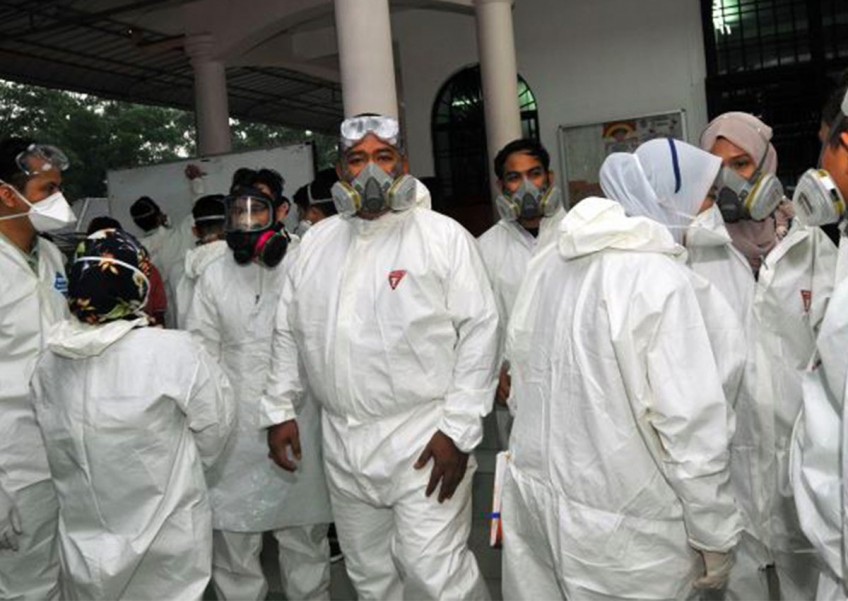12-year-old boy develops Parkinson's-like condition due to Pasir Gudang pollution

KUALA LUMPUR - A 12-year-old Malaysian boy has developed myokymia, a type of ailment that causes parts of the body to tremble, after being exposed to pollution in the Sungai Kim Kim in Pasir Gudang.
Irfan Wafiy Idham Wazir - the fourth of five siblings and a student of Sekolah Kebangsaan (SK) Taman Bukit Dahlia in Pasir Gudang - developed the Parkinson's-like condition after experiencing breathing difficulties in March.
It is believed that he had sniffed poisonous gases at school, following which he was admitted to the Sultan Ismail Hospital, Bernama reported.
He was in hospital for 10 days, during which his health progressively deteriorated.
His mother, Norlela Abu Hashim, 45, said specialists had carried out various procedures, including Magnetic Resonance Imaging (MRI), to determine why his leg shook.
"His leg started to shake the second night he was in the hospital. When he was asleep, his heart was beating fast. The doctor slapped his face several times but he did not wake up, as if he was in a very deep sleep. The medical team then decided to summon the neurologist," recalled Ms Norlela.
"The neurologist told him to walk but he could not do so. I had to hold him. One time, I took him to the toilet and he fell because I forgot that he could not walk normally," Ms Norlela told Bernama.
Irfan's case was subsequently referred to Kuala Lumpur Hospital, where investigations determined that he had myokymia after the poisonous gases caused his lungs to fail.
[[nid:451442]]
His father, Mr Idham Wazir, 49, has quit his job to focus his energies on his son, who was set to sit for the Primary School Evaluation Test (UPSR) in September, according to his mother.
"I have stored all his toys and sports equipment. At times, Irfan Wafiy will punch his calf hoping that it will no longer tremble. As a mother, I am sad at what had happened," said Ms Norlela.
On March 7, 105 students and residents near Sungai Kim Kim experienced symptoms such as headaches, nausea, unconsciousness and breathing difficulties after chemicals were dumped in the river.
Then, on March 11, a second wave of people fell sick, with as many as 1,000 warded within the course of several days, including eight in the intensive care unit.
The poisonous gases produced after the chemicals reacted with water and air included acrylonitrile, xylene, methane and toluene, which can be absorbed by the human body through the respiratory tract and also the skin.
This article was first published in The Straits Times. Permission required for reproduction.